Proximity Marketing: How Your Business Benefits From In-Venue Targeting

As technology advances, marketing continually adds new channels to reach audiences. Wireless communications, internet connectivity, and other advancements have added multiple ways to connect with customers. The latest marketing evolution is proximity marketing, which is quickly becoming a favorite tactic for data-driven marketers.
What is Proximity Marketing?
Proximity marketing refers to the use of wireless location technologies to directly communicate with customers via their portable devices.
Proximity marketing allows venues to communicate with visitors at the right place and time, with highly relevant, personalised content on their mobile devices. It allows venue owners and businesses to use location as a basis for marketing activities.
Visitors can be engaged with messages at entry points, while in specific locations, or even after they leave a venue. Proximity messaging can include special offers, wayfinding help, surveys, video, and more.
Marketing by customer proximity requires one of the following methods to determine a device’s location:
- A cellular phone being in a particular cell or geofence
- A web-enabled device with GPS that gets localised content from Internet servers
- An NFC-enabled device that can read a RFID chip
- A Bluetooth beacon that recognises an active Bluetooth-enabled device
- WiFi access points connected to a WiFi-enabled device

Who Uses Proximity Marketing?
Marketing based on proximity can be deployed in any setting with wireless connectivity. Therefore, nearly any business that operates a physical location can implement a proximity marketing strategy.
Use cases for retail, hospitality, transportation hubs, smart cities, shopping centers, restaurants, and other venues include:
- Delivering targeted offers to visitors while they are in a venue or after they leave
- Driving enrolment in loyalty programs
- Sending surveys to collect feedback about visitor experiences or sentiment
- Providing wayfinding information, or promoting local attractions and on-site events
- Delivering sponsored display ads from third-parties to create additional revenue opportunities
- Promoting retail tenants, or on-site amenities and services
What Makes Proximity Marketing Effective?
Proximity marketing is effective because of the timing and contextual nature of the messages sent. It allows marketers to reach visitors with highly-targeted messages delivered at the optimal time and location to take action.
An effective proximity marketing toolset, such as Skyfii’s IO Engage, enables marketers to capitalise on these unique benefits through location-based triggers, behavioural segmentation, and multichannel content delivery.
Location-based Triggers

Automated campaign triggers allow marketers to engage visitors based on their location within a venue, supporting better campaign timing and context.
Messages can be triggered when certain actions or events occur – or even by inaction. Proximity marketing messages can be triggered in a number of ways, including:
- Following entry or exit from a venue
- Proximity within a zone (e.g., near a product or within a particular department)
- After a period of dwell time has occurred
- After a digital action (e.g., login to guest WiFi, interaction with a mobile app, etc.)
Proximity marketing enables marketers to capitalise on the local nature of an onsite visit, where in-the-moment timing can increase engagement with the messages delivered, and trigger impulse buying. For example, consider a buy-one-get-one-free offer on body soap while a visitor is in the personal hygiene aisle.
Behavioural Segmentation
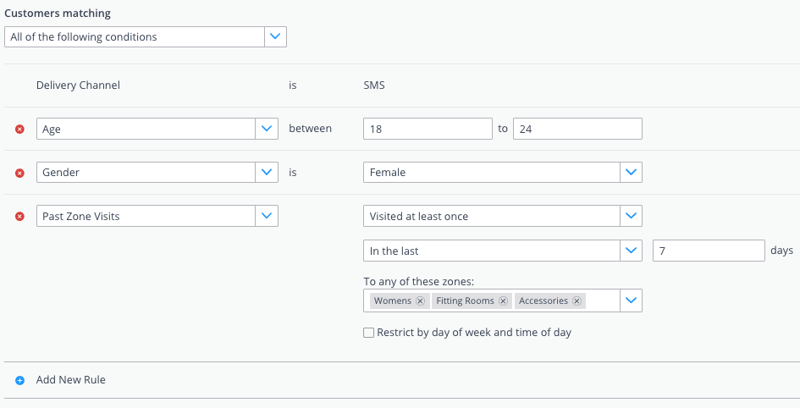
Proximity marketing allows you to use data about the past actions and behaviors of your visitors to more accurately target them. For example, with the right data-driven tools, you can target visitors based on a range of behavioural criteria, such as:
- Loyalty (e.g, how often they visit, time since last visit, etc.)
- Areas they engage with (e.g., departments, retail categories, tenants, etc.)
- Preferences (e.g., days of the week they usually visit)
By segmenting visitors by what they do in your venue, you can reach them with personalised messages that better match their needs and interests. For example, you can:
- Increase conversion with offers related to the retail categories they frequent most
- Encourage cross-category shopping by driving visitors to another department with a complimentary offer
- Reward loyal customers who frequent your venues with an exclusive offer on their next visit
Multi-channel Content Delivery
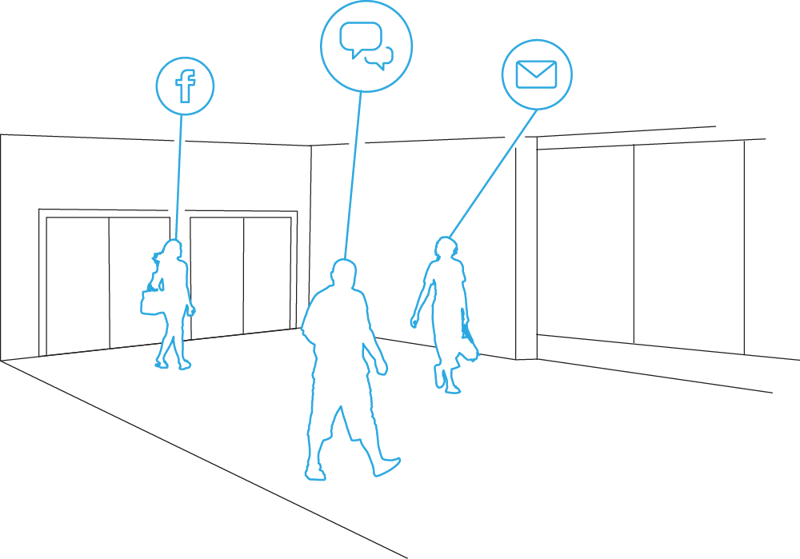
When it comes to proximity marketing, you’re not limited to a single delivery channel to reach visitors. With an effective data-driven marketing suite, marketers can send messages via a WiFi captive portal, SMS, mobile in-app push notifications, email, digital signage, and more.
Your audience isn’t homogenous – some channels work for certain audiences while others do not. Additionally, some messages are better suited to certain channels than others (we’ll cover this in more detail in the next section). In light of that, proximity marketing through multiple channels provides the flexibility to connect on the most effective channel for each type of message and audience segment.
Which Proximity Marketing Channels Should You Use?
Proximity marketing can be deployed using multiple digital channels, each with its own advantages. Often marketers may use more than one channel simultaneously, providing a multi-pronged approach to reaching visitors at different touch-points in the visitor journey. As previously mentioned, it’s important to consider which channel will be most effective for each type of message.
SMS
SMS (AKA text messaging) is good for timely engagement as many people constantly check their messaging app. It’s a good channel for delivering special offers, links to surveys, and other information related to the location of the visitor at that moment. While this channel requires the visitor’s phone number to be known, you can use WiFi location and presence data as triggers to send a message if the user’s device is registered to your WiFi network.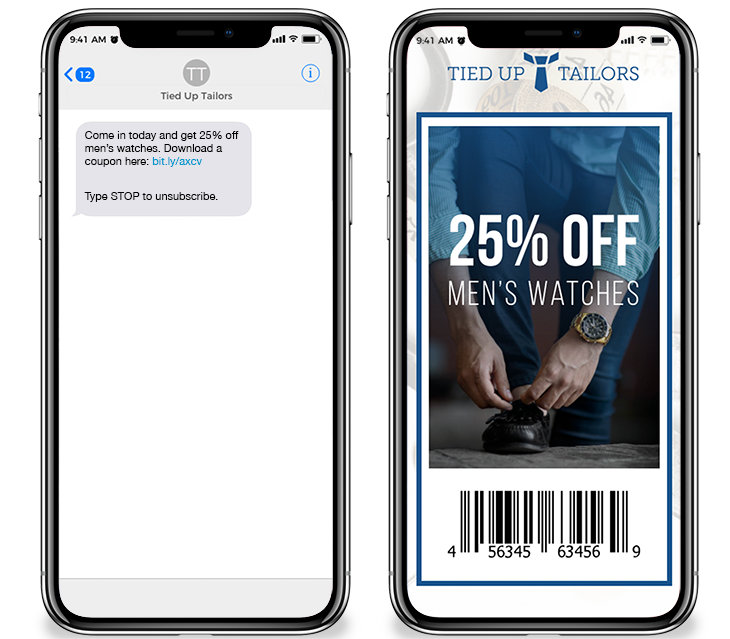
Mobile Apps
Proximity marketing through your mobile app can be an excellent method of increasing app engagement. Visitors can be sent push notifications about special offers, or in-app features that they can use to enhance their experiences while onsite. Additionally, mobile app integrations with beacons and NFC devices gives marketers the means to provide contextual information. For instance, visitors can use their devices to learn more about a product or interact with a digital display.

In a proximity marketing campaign, email is great for providing relevant content after a visit. For example, you can trigger automated exit surveys to collect feedback about visitor experiences, or deliver promotions and information related to their behaviors while onsite. Email is also a great channel for increasing loyalty too. You can programmatically send an email to visitors who haven’t been in your venue in a while, or reward those who visit often with exclusive content and offers.
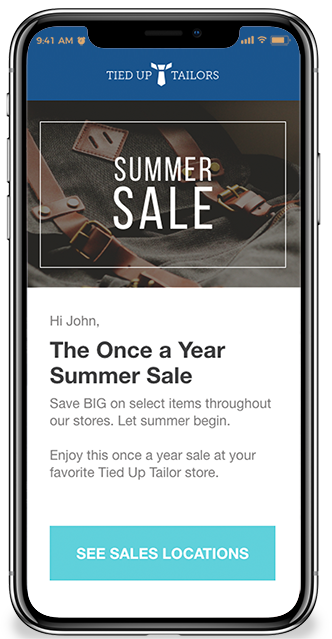
WiFi Captive Portals
WiFi captive portal offers a multimedia channel to deliver robust messaging. Since many venues already have a WiFI network, they can be an effective, low-barrier method for reaching a lot of visitors. Visitors can be engaged with videos, promotions, and relevant information about a venue when they access the WiFi network – even if they aren’t yet subscribed. Additionally, you can leverage WiFi captive portals to collect visitor information and allow them to opt-in to your marketing communications. This allows you to quickly build a database of visitor information (such as email, phone number, demographics, etc), and engage them targeted communications across channels.
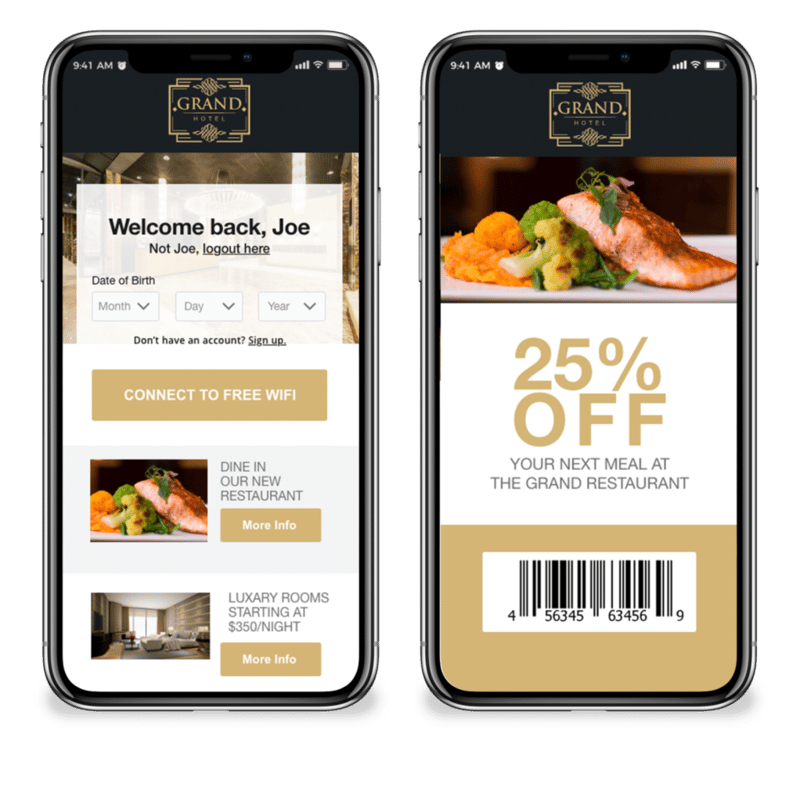
Planning a Proximity Marketing Strategy
Now that we’ve covered what proximity marketing is, and how it works, let’s cover a few additional points to help you plan an effective proximity marketing strategy.
Connectivity
First, consider connectivity. As previously mentioned, proximity marketing requires one or more technologies to trigger proximity messages (e.g., WiFi, beacons, GPS, etc). Which technologies you use depends on your goals, and the kind of engagement you want to create. If your venue already has one or more of these technologies in-place, Skyfii’s IO Engage can help you start leveraging them as part of your proximity marketing strategy. If you don’t currently have any in-venue technology that can be leveraged, or aren’t sure which ones are right for your application – we’ve helped many of our customers with that too.
Data Collection & Analytics
At the cornerstone of any effective proximity marketing strategy is data. Firstly, in-order to effectively target your visitors with personalised and relevant content – you need quality data about who those visitors are, and how they engage with your venue. One effective way to do this is by leveraging a guest wifi captive portal to quickly build a database of visitor profiles and behavior. That data can then be used to create highly-refined visitor segments, allowing you to create more targeted – and ultimately, more effective proximity campaigns.
In addition to visitor data, the ability to gather detailed analytics about how your campaigns are performing is critical. At a basic level, the ability to attribute proximity campaigns to specific actions like visits or conversions is important for gauging campaign success. Additionally, analyzing data about how different channels, messaging, and content types perform for each audience segment can help you further optimise your campaigns. With the right data analytics toolset, you can gain these insights, and build off what works for future campaigns.
Leverage Expertise
Finally, leveraging the experience of industry experts can help you get the most out of your proximity campaigns. If you’re new to proximity marketing, there can be a bit of a learning curve as you begin planning and designing your first campaigns. Engaging the right marketing experts can help you launch a proximity marketing strategy that works well for your specific audience and desired outcomes.
The Proximity Marketing Solution
In conclusion, the value of timing and context in proximity marketing campaigns cannot be understated. The ability to reach your visitors with highly-relevant content, at a time when they’re most likely to act allows you to cut through the noise.
When it comes to proximity marketing, Skyfii’s suite of data-driven marketing tools provide all the features you need to make campaigns effective. Our cloud-based solutions make it easy to deliver engaging campaigns across channels, and measure their performance. Additionally, Skyfii’s data and marketing services team can help you get up and running with campaign planning and strategy, content optimization, creative services, advanced segmentation, and more.
Learn More About IO Engage
To learn more about our solutions, and how we can help your business, click here schedule a demo with our team.